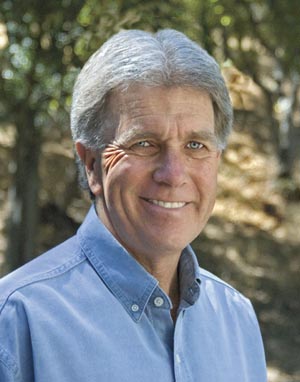Getting Out: Those of us who like to get out into the natural
world quite often fall into photography. Gazing across a wild
landscape from a remote peak, sitting in the soft light of the
setting sun by a still mountain lake
— at times like this, it is natural to want to capture the
moment to enjoy again and perhaps share later with others.
Those of us who like to get out into the natural world quite often fall into photography. Gazing across a wild landscape from a remote peak, sitting in the soft light of the setting sun by a still mountain lake — at times like this, it is natural to want to capture the moment to enjoy again and perhaps share later with others.
But how successfully do we capture the moment? When I looked at my early photographs of wilderness trips, it was hit and miss with more misses than hits. The scene, so grand in my memory, was often a miserable disappointment as it appeared on that 24-millimeter-by-36-millimeter slide. But every once in a while, certainly more by luck than by skill, there would be a stunner in the bunch that excited me to learn more. How can I improve my average?
Over the last 20 years, I have taken many photographic seminars in interesting places, and my numbers have improved. But the greater lesson I have learned through photography is how to better see the world around me. Rather than seek the obvious shot of Half Dome or Yosemite Falls — a picture a chimp could take — photography has taught me to seek unlikely subtle subjects. In addition to the wide-angle grand scene, I have begun to see and photograph surprising close-in landscapes.
A great photographer has the vision and skill to reveal the extraordinary in the ordinary. Reading the books of Freeman Patterson has shown me that there are great pictures to take while baking cookies in the kitchen or walking through a rock quarry in harsh midday light. For this reason, it seems to me that a better place to learn the skills of outdoor photography is in one’s driveway rather than in a national park. Working with the elements of design — lines, textures, pattern, shapes — and using them to find remarkable images in such an ordinary setting will teach you to see the outdoors in a new way and find fresh photographs where you didn’t before.
The late Galen Rowell, renowned outdoor photographer, looked for interesting scenes along nature’s edges where contrasting features meet. Rocks poking through water along a lake shore, a sunlit puff of cloud next to a rock silhouette, a delicate group of wildflowers growing at the base of a stout tree trunk — these are a few examples of where you will find intimate images that will surprise you. While Rowell was always searching for the “wow” factor, usually alpenglow on majestic peak, many of his most enduring and powerful images are modest close-in compositions.
This new way of seeing the landscape, whether part of a practice of photography or just an effort to be a better observer, will vastly increase your enjoyment of the outdoors. The majestic views, across the Grand Canyon or from the summit of Mount Whitney, will always inspire, but a careful observer learns to see magic in a setting that he used to pass unnoticed. Without a doubt, the few times I have successfully photographed an intimate landscape bring me the greatest satisfaction. You will enjoy such images long after the “wow” factor of the grand scenic has passed.
A skilled photographer will need to learn the elements of design to make consistently successful images. What goes inside the image rectangle, and how do I arrange it there to make a strong picture? Working to get better is the fun of it.
You do not need a hoochy-coochy Nikon to do this; a point-and-shoot camera from Target is just fine. On your next hike, with a camera or without, occasionally drop your gaze from the distant view to within shouting distance, then whispering distance. Wonders are at your feet.










